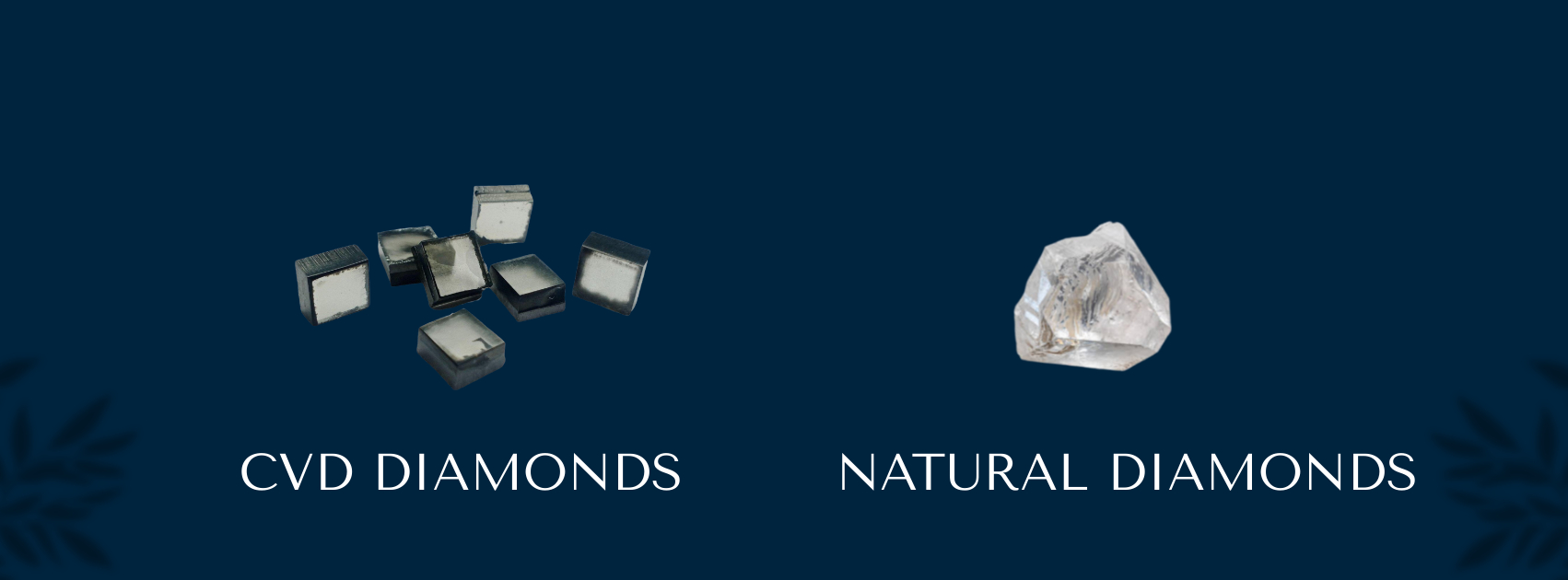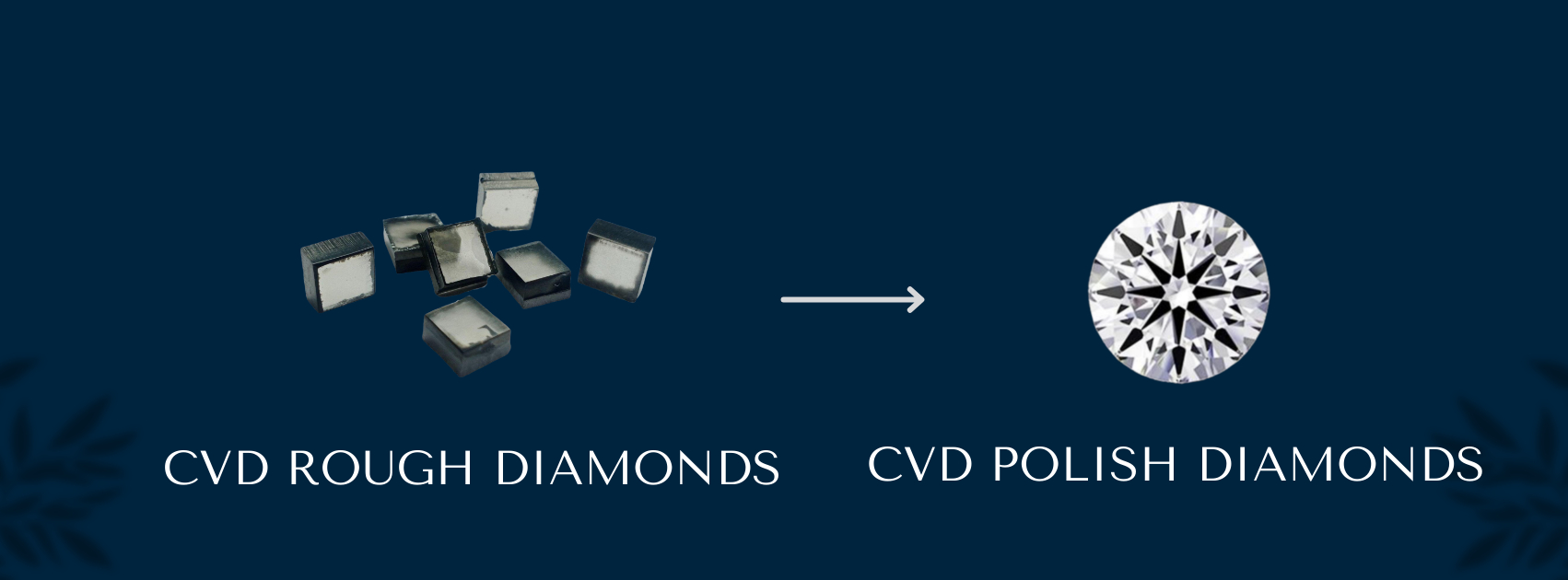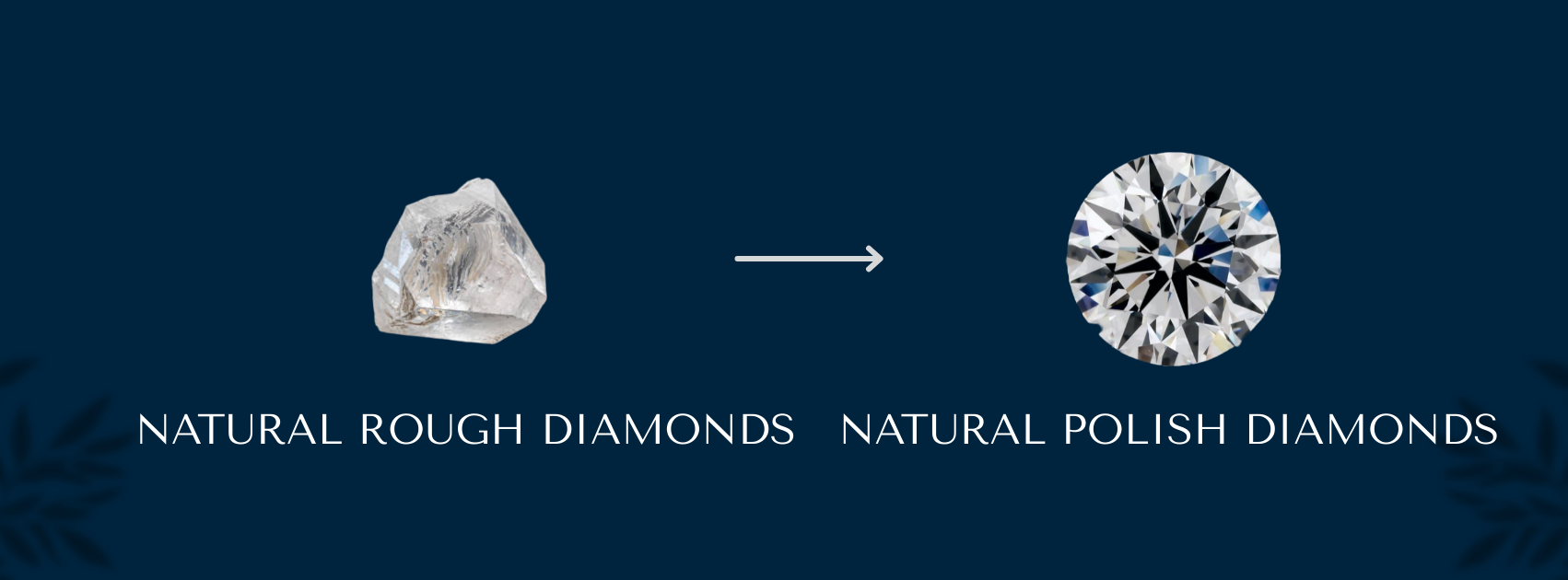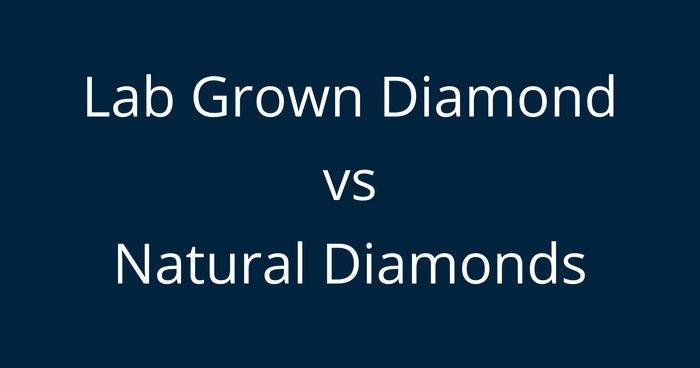In the world of diamonds, the comparison between lab-grown diamonds and natural diamonds has sparked great interest among consumers. Lab-grown diamonds are created in controlled environments using advanced technological processes, while natural diamonds are formed deep within the Earth's mantle over millions of years. Both types of diamonds have their unique characteristics, and it is important for consumers to understand the differences before making a purchase.

What are Lab-Grown Diamonds and How Lab-Grown Diamonds Created ?
Man-made diamonds, also referred to as CVD diamonds, are produced through advanced technological procedures within controlled settings. These methods encompass high pressure and high temperature (HPHT) or chemical vapor deposition (CVD) techniques to imitate the natural diamond formation conditions. In the HPHT technique, a small diamond seed is positioned in a carbon source and exposed to intense pressure and temperature, prompting the carbon to solidify and generate a larger diamond. Conversely, the CVD method entails the utilization of a hydrocarbon gas blend in a regulated chamber, leading to the separation of carbon atoms and the development of diamond crystals on a substrate.
The benefits and drawbacks of lab-grown diamonds
When evaluating the benefits and drawbacks of lab-grown diamonds, it is essential to weigh the sustainability and ethical considerations against the potential limitations of these man-made gems. Lab-grown diamonds offer a sustainable and environmentally friendly alternative to mined diamonds, reducing the impact of diamond mining on ecosystems and local communities.
Additionally, the controlled production process ensures that lab-grown diamonds are free from the ethical concerns associated with traditional diamond mining. However, some consumers may still value the natural allure and rarity of diamonds formed over millions of years, which lab-grown diamonds may not fully replicate. Understanding these nuances is crucial for consumers seeking to make informed choices when selecting their desired diamonds.

Formation and mining process of natural diamonds.
Formed deep within the Earth's mantle over millions of years, natural diamonds are the result of intense pressure and heat acting upon carbon atoms. The process begins with carbon being subjected to extreme temperatures and pressures, causing it to crystallize and form diamonds. These precious gems are then brought closer to the Earth's surface through volcanic eruptions, where they can be found in diamond-rich deposits known as kimberlite pipes.
The mining process for natural diamonds involves extracting these deposits through open-pit or underground mining methods, followed by sorting and processing to retrieve the diamonds. This intricate journey from the Earth's depths to the hands of consumers underscores the natural beauty and allure of these timeless gems.
The characteristics and value of natural diamonds
Natural diamonds possess an unparalleled allure and value that stems from their remarkable characteristics and timeless journey from the Earth's depths. Formed over millions of years deep within the Earth's mantle, natural diamonds undergo an intricate process of crystallization under intense pressure and heat, culminating in the creation of these precious gems. The allure of natural diamonds lies in their rarity and the story of their formation, carried through volcanic eruptions to the Earth's surface in diamond-rich deposits. The value of natural diamonds extends beyond their physical beauty, encompassing their historical significance and the emotional connections they evoke in those who wear and cherish them.

Comparison of Lab-Grown vs Natural Diamonds
When comparing the physical and chemical properties of lab-grown and natural diamonds, it's essential to consider their unique characteristics and formation processes. Lab-grown diamonds exhibit similar physical properties to natural diamonds, such as hardness, refractive index, and thermal conductivity, owing to their identical crystal structure. However, differences arise in the presence of impurities and growth patterns, which can affect the diamond's color and clarity.
In terms of chemical composition, lab-grown diamonds may contain trace elements from the growth environment, distinguishing them from natural diamonds. Understanding these distinctions can aid consumers in making informed decisions based on their preferences and ethical considerations.
When delving into the differences in cost, quality, and availability between lab-grown and natural diamonds, it becomes evident that these factors play pivotal roles in consumer decision-making. The cost disparity arises from the intricate processes involved in creating lab-grown diamonds, which can result in lower prices compared to their naturally occurring counterparts.
Quality distinctions manifest in the unique characteristics of each type, with natural diamonds boasting the allure of millions of years of formation, while lab-grown diamonds offer controlled and consistent quality. Availability is influenced by the sustainable nature of lab-grown diamonds, which can cater to increasing demand while addressing ethical concerns. Understanding these distinctions empowers consumers to navigate the diverse landscape of diamond choices.
In the comparison between lab-grown and natural diamonds, it is essential to consider their physical and chemical properties, cost, quality, and availability. Additionally, the ethical and environmental impact of choosing between these two types of diamonds is a crucial aspect to examine.
Both lab-grown and natural diamonds offer unique characteristics and value, and understanding these differences can empower consumers to make informed choices when it comes to purchasing these precious stones.


